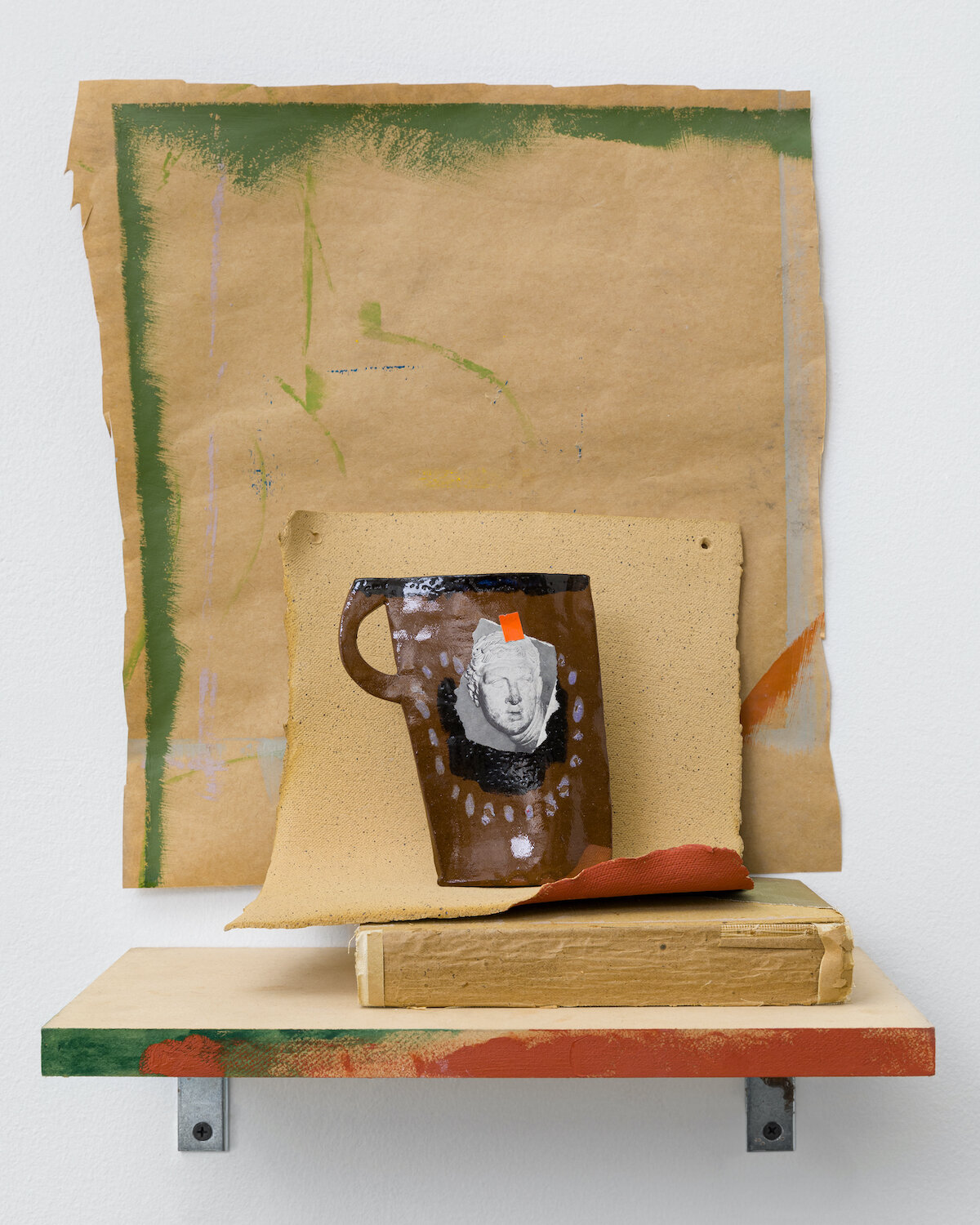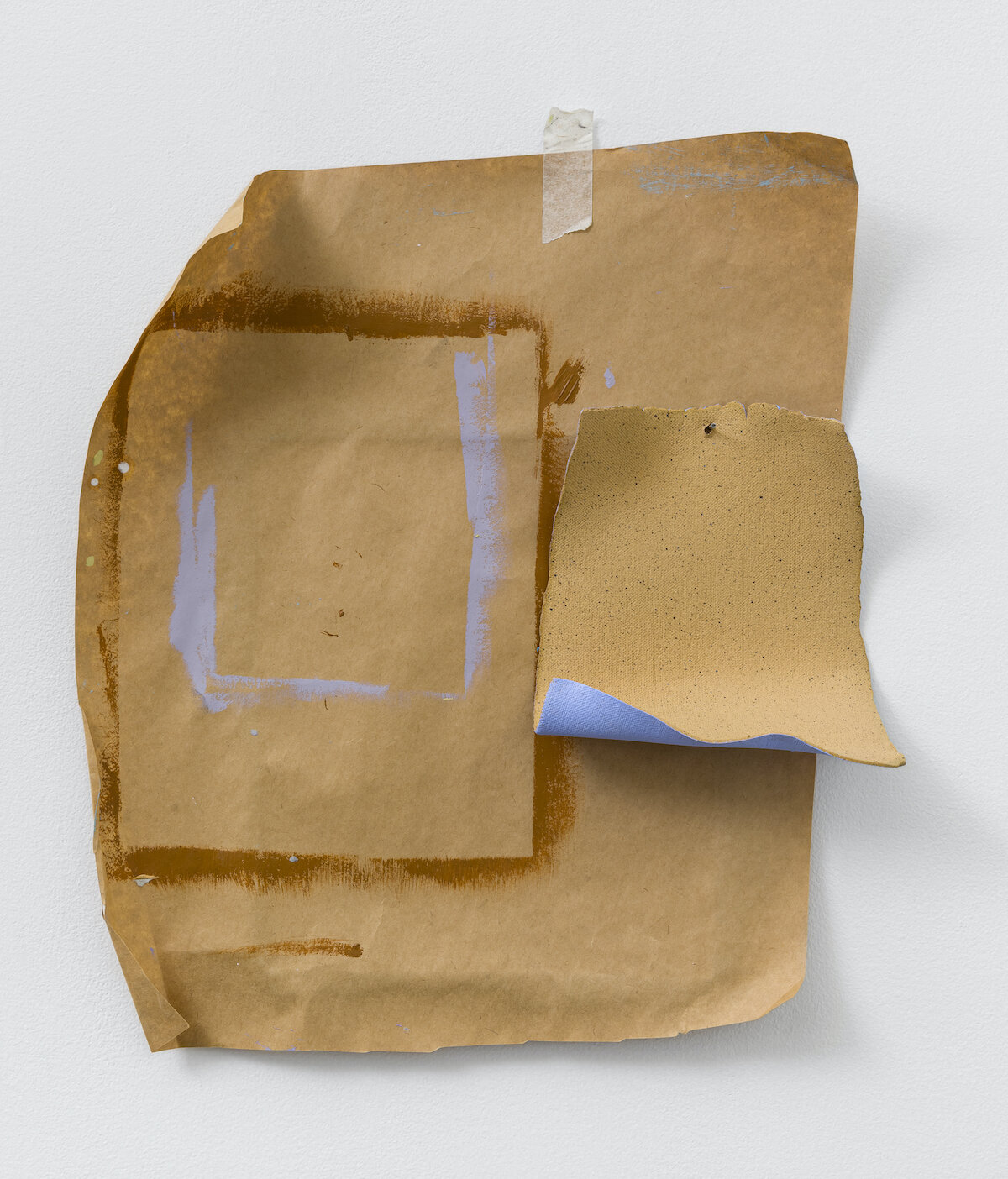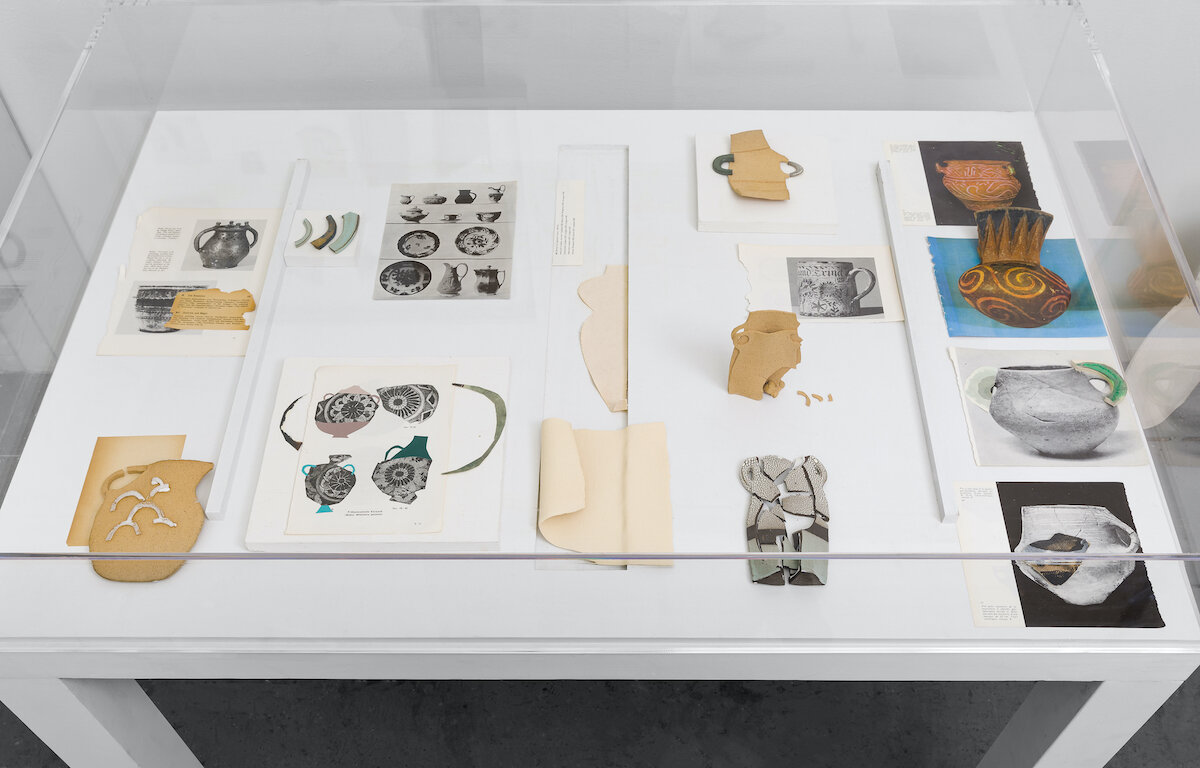Portrait of Alison Owen.
Alison Owen
Alison Owen is a multidisciplinary artist who lives and works in Brooklyn, NY. She has participated in numerous residencies, including Artists Alliance in the Lower East Side, Wave Hill in the Bronx, LMCC Process Space on Governors Island, The Joan Mitchell Center in New Orleans, and the AIM program at the Bronx Museum of Art. She was a fellow in the A.I.R. Gallery Fellowship Program in 2017. In 2010, she received a New Genres grant from the Rhode Island State Council for the Arts. Owen has exhibited her artwork in galleries across the United States, including Smack Mellon and AIR gallery in Brooklyn, the DeCordova Museum in Massachusetts, The Providence Museum of Natural History, and Staple Goods in New Orleans. She also creates site-specific installations in domestic environments, under the title House Work.
Interview with Alison Owen
Questions by Andreana Donahue
Can you tell us a bit about your background and where you grew up? In what ways have your early visual experiences and personal history led to art-making?
I grew up in San Diego. There wasn’t a lot of exposure to art in my childhood, but my parents didn’t put pressure on me to do anything in particular, so I had a lot of free time and was pretty creative: always reading, writing stories, drawing, sewing, making jewelry. I would make dollhouse furniture out of little scraps of things I found around the house, and that’s the closest parallel to what I do now- so much of my art practice is about scavenging and finding ways to use the little scraps I find.
Where are you currently based and what initially attracted you to working in this community? Are there any aspects of this place that have surfaced in your work?
For the next couple weeks I’m in Brooklyn, but I’m moving upstate at the end of October. I moved to New York after grad school (which was in LA) and have been here for over a decade. I love my community here, which is comprised of people I’ve been in shows with, have taught alongside, have done residencies with, am neighbors with. I tend to gather materials from the communities I find myself in, so other people’s art practices always make their way into my work.
Can you tell us about your studio and what a typical day is like for you? Do you share space or ideas with other artists while working, or is it a more solitary routine?
Right now I have a private studio, so my day is very solitary. I start every studio day by making tea and mapping out what I want to do- if it’s going to be a day to make ceramics, draw, paint, make a collage, work on a larger project. These days I am spending most of every day in the studio, because I haven’t started back teaching yet. It feels very luxurious to have so much time to work on my own things. When I am working on an installation or community based project, I tend to have more interaction with other people, but other than those projects, I mostly working alone.
Alison Owen’s studio space.
What criteria do you follow for selecting materials? Do you prefer to maintain a narrow focus or work across diverse media? How do you navigate the limitations and possibilities that result from this path?
I work across a lot of different media. I gather materials (mostly studio scraps and detritus) from other artists, and from my young students, but I also work in ceramics, and I paint, draw, and make collages. I think I’ve always given myself freedom with the materials I choose. But as I get older, I am more confident about taking that freedom, and not worrying so much what it says about me that I don’t stick to one material or one project.
Can you walk us through your overall process? How would you describe your approach to manipulating materials? What about decision-making and editing?
I have a pretty intuitive approach to composition and manipulation of materials. My ceramic vases and collages are made in a pretty free-form way, drawing into slabs of clay with a knife. I have been collecting old art books and home decorating manuals and I make collages out of those. The collages then become the source material for my paintings. And I make vessels based on the ones I see in still life paintings and in art books (like Greek amphorae or the vases in a Matisse painting, for example). I want everything that I make to have a kind of aptness, and lightness, whether it’s an object that is part of an installation or a sculpture or painting that stands alone. I like serendipity in relationships between materials and I like the materials to do a lot of the work for me, just being themselves.
Can you talk about some of the ongoing interests, imagery, and concepts that have informed your process and body of work over time? How do you anticipate your work progressing in the future?
Currently I am pretty obsessed with vessels. I started working in ceramics about 6 years ago, and at first my ceramics practice was separate from my installation practice. But over time the two started to overlap, and now it’s pretty much all overlapped. The vessels fit nicely into my ongoing interest in museum archives and display. They are also prevalent as subject in paintings, and have been used casually and almost thoughtlessly in daily life. So they are a great subject for me, with a lot of different avenues to pursue. I am interested in the ways that art is re-presented over time, so for example I really love old art books and museum guides. I also love online archives, visible storage rooms at museums, classification and display of any sort of collection.
Still Life, 2019. Found stretcher, butcher paper from art classroom, clay, acrylic, 40"x40"x3"
Do you pursue any collaborations, projects, or careers in addition to your studio practice? If so, are there connections between the two?
I make functional ceramics that are absolutely connected to my studio practice. Sometimes they make their way into my installations, or my mixed media pieces. I enjoy working both ways, I’ve never loved how rarified the art world feels and I like making things that people can live with and use. I also teach art to children, through a non profit in the city. The kids are so inspiring to me. Usually their work is so free, and so wonky and strange, and yet they are happy and uncritical about it. I love their observational drawings so much. Also, I sometimes take scraps from the classroom to use in my studio, like the butcher paper that covers the art tables (or used to, back when I taught in person). At the end of a week of art lessons, the paper would be covered with all these accidental marks from oil pastel, watercolor, paint, pencil, and they are so beautiful. So I take them home and incorporate them into my own work.
As a result of the pandemic, many artists have experienced limited access to their studios or loss of exhibitions, income, or other opportunities. Has your way of working (or not working) shifted significantly during this time? Are there unexpected insights or particular challenges you’ve experienced?
I was fortunate in that my studio is private so I could continue to work. I switched to teaching online, which actually freed up a lot of time for me as I no longer had to commute. I feel like this past six months has been a really intense period in the studio, and I have started new projects that I’d never have had the time for. I started making watercolor paintings of my art-book collages. And for several months, I was making drawings of people’s homes, based on photographs they sent me. That was a really nice way to feel connected to other people in a time when I was only really seeing my boyfriend and my son. One thing that feels quite different is that I no longer spend so much time and energy applying for residencies and opportunities. It’s actually been really freeing. I realize I spent a lot of time applying for things, and hoping for these residency experiences. And while residencies have been a really significant part of my artmaking, I am also seeing how it feels to make things in my own space, on my own timeline, and I like it a lot. I miss the interaction with other people, that’s been hard. And I definitely feel some anxiety, which has meant that I have been drawn to projects that are more physical, using my hands and processing things that way, and I have less focus for larger projects, and for planning.
Archive, (detail), 2020. Ceramic, found materials.
In a time that seems to be marked by uncertainty, collective anxiety, and increasing social unrest, why do you think the perspectives and contributions of artists remain meaningful? Do you feel a natural relationship exists between your work (or the role artists play more broadly) and confronting established systems - of power, cultural institutions, or otherwise?
I have always been interested in what makes up the archive, the story, the museum collection. And I have tended to gather in a lot of people when I make installations- by collecting materials from other artists, or leading art making challenges, or mailing out postcards. So I think I am naturally interested not only in the artwork, but in who makes the work, how it’s shown, what’s seen as important and what’s not. I think artists are important because they show us other ways of looking, they tell stories, they question the way things are done. I am happy when I see artists sharing their work and making things happen, in whatever way they see fit. Ideally, I’d love to see artists have more agency, and galleries and museums hold less power.
Can you share some of your recent influences? Are there specific works - from visual art, literature, film, or music - that are important to you?
I recently have felt really inspired by Rachel Cusk’s trilogy. I love the circuitous way that she develops character and tells stories. That’s probably been the most exciting influence I’ve found in awhile. I get a lot of inspiration from writers, Lydia Davis is another favorite. My favorite filmmaker is Olivier Assayas, I loved in particular Summer Hours, which has a lot to do with what happens to art as it gets passed along generations, and what is valued over time.
Archive, (detail), 2020. Ceramic, mixed media, wood, canvas.
Who are some contemporary artists you’re excited about? What are the best exhibitions you’ve seen in recent memory?
I haven’t seen shows in awhile, and I really miss them! I have plans to go to galleries, but it was off limits for so long that it feels like a lifetime ago. And unfortunately one of the drawbacks for me about seeing things online, like on instagram or a gallery website, is that I am seeing all of these things all together, like one massive group show, and it can be hard to really dive in to an artist’s work. So the shows that come to mind are the ones that feel very immersive and very specific. One show that I loved so much was Kai Althoff’s show at Tramps, and I loved the Amy Sillman curation at MoMA. In different ways, both of them are drawing relationships between materials, between individual works of art, and with the space. I also loved the Kaari Upson show at the New Museum a few years ago, she has such a varied practice but it all works together. And I am often drawn to the materiality of the artwork, so artists like Maia Cruz Palileo, Nicole Cherubini, Padma Rajendran, Simone Fattal come to mind.
What are you working on in the studio right now? What’s coming up next for you?
I just finished a zine project with a small press called Soon We’ll Be Dead. That was really fun, because the work in the zine is all paintings and collages that were made from old art books. So I made a series of collages, then I painted them, then the collages and paintings were reproduced in this zine, and it’s satisfying to have them back into book form, like they’ve gone down a little circular path. I’m also making a lot of vases at the moment, and figuring out different ways to paint on them. And I’m continuing with the paintings based on art book collages, those are relatively new for me (the last six months or so) and I’m excited about exploring that more. And aside from that, I’m moving soon, and I’m seeing the house as a new kind of installation project, a space for the work I want to make, the collections I have, etc. It’ll be nice to have everything in one place, with enough space for it all. After so many years of living very cramped in Brooklyn, it sounds incredible to have room to spread out. I’m not exactly sure how it will affect my artmaking, but I’m sure it will.








